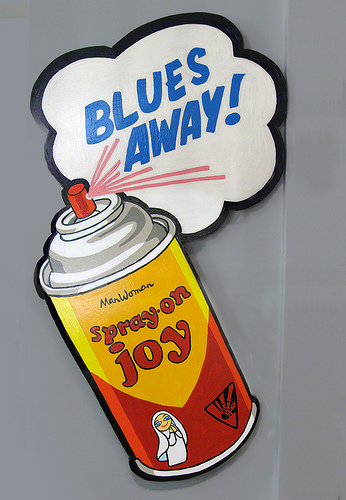 Three positive emotions to one negative emotion; this is the scientifically proven tipping point to go from floundering to flourishing. It sounds easy enough but unfortunately studies consistently show that 80% of us have a ratio of 2 to 1. Think about the number of times that you feel impatient, angry, frustrated or fearful versus curious, joy, amusement, or grateful.
Three positive emotions to one negative emotion; this is the scientifically proven tipping point to go from floundering to flourishing. It sounds easy enough but unfortunately studies consistently show that 80% of us have a ratio of 2 to 1. Think about the number of times that you feel impatient, angry, frustrated or fearful versus curious, joy, amusement, or grateful.
This ratio is over a period of time (a week or more), not just one day. A key factor for success is that the emotions must be authentic and not an attempt at “faking it till you make it.” You can actually make things worse if you deny your negative emotions and try to plaster over them with positive emotions that are inauthentic. Stress hormones increase to even higher levels when we pretend all is well and we are really feeling negative emotions.
Research consistently shows that individuals and teams who demonstrate a ratio of at least 3 to 1 are more successful. They are more productive and resolve issues more quickly than individuals or teams with lower ratios. Their relationships are stronger and they continually grow and improve with a significantly higher quality of life.
How do you increase your ratio? Here are some strategies based on the information in Barbara Fredrickson’s book, “Positivity.” Go to her site: positivityratio.com to take a quick self test and see where your ratio is now and then re-take the test after you implement some of these suggestions to deliberately increase your ratio.
Dispute your negative feelings. Question the situation that is causing the negative feelings like a lawyer would to get to the facts versus your interpretation that may be pulling in other negative memories or interpretations. I do this by imagining that I am video taping the event in question to separate the actual actions from the interpretation or story in my head. This process is effective in nipping a negative feeling like frustration from spiraling into anger and resentment.
Cultivate strong connections with others. Research consistently shows that people with strong social interactions have a higher quality of life. Listen and be fully present in your conversations, look for ways to help the people on your team or in your life, express appreciation for their strengths and acknowledge their contributions.
Be open minded. Let go of expectations and judgments and focus on being in the moment. Practice noticing what is around you and experiencing it as if you were seeing it for the first time. Traveling internationally to different cultures helps me cultivate this skill. In China something as simple as going to use the restroom in a restaurant was a whole new learning experience that forced me to be fully in the moment and pay attention to everything around me.
Create a list of distractions. Use this list to move your mind away from worrying or ruminating that leads to downward spirals of negative emotions. Unfortunately many of us have used the unhealthy distractions of alcohol or other drugs which lead to bigger problems. Think of things that you really enjoy doing or will keep your mind busy. Watching a good movie, yoga, taking a walk or running, playing a video game (beware of the games that cause negative emotions via violence), or doing a crossword or Sudoku puzzle.
 Spend time in nature and meditate. Positive emotions grow just by looking at the blue sky, trees, or other natural environments. Meditation on a regular basis, especially meditation focused on loving-kindness, has a direct correlation to increasing your level of positive emotions. Think of a person (or pet) that you have warm, compassionate and loving feelings toward. While you meditate focus on experiencing these feelings and extending them to other people around you while gently letting other thoughts go. I accomplish both nature and meditation by doing walking meditation in the beautiful desert.
Spend time in nature and meditate. Positive emotions grow just by looking at the blue sky, trees, or other natural environments. Meditation on a regular basis, especially meditation focused on loving-kindness, has a direct correlation to increasing your level of positive emotions. Think of a person (or pet) that you have warm, compassionate and loving feelings toward. While you meditate focus on experiencing these feelings and extending them to other people around you while gently letting other thoughts go. I accomplish both nature and meditation by doing walking meditation in the beautiful desert.
Try a few of these and see what happens to your ratio. It is not a matter of just thinking positively and avoiding negative emotions. Negative emotions are necessary; we just need to minimize them and maximize our positive authentic emotions to navigate to success with less stress.
What do you think? Please leave a comment!
photo credits: Duncan Creamer & Martin LaBar